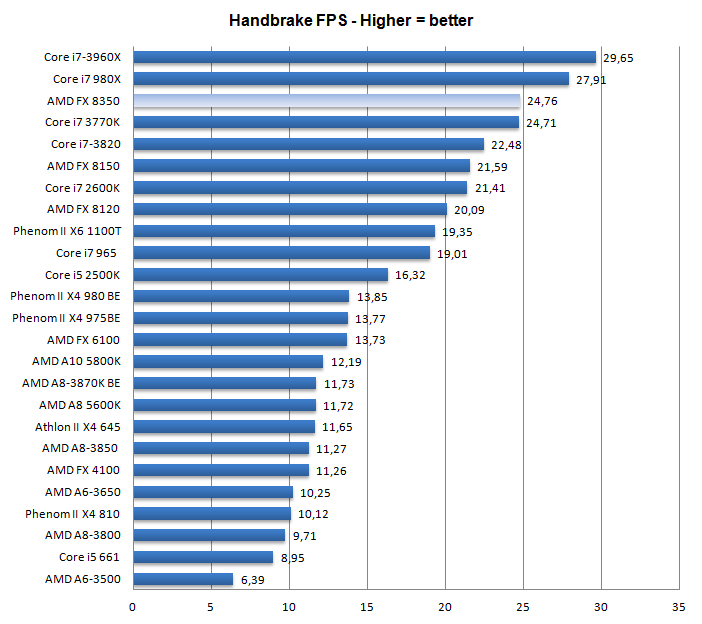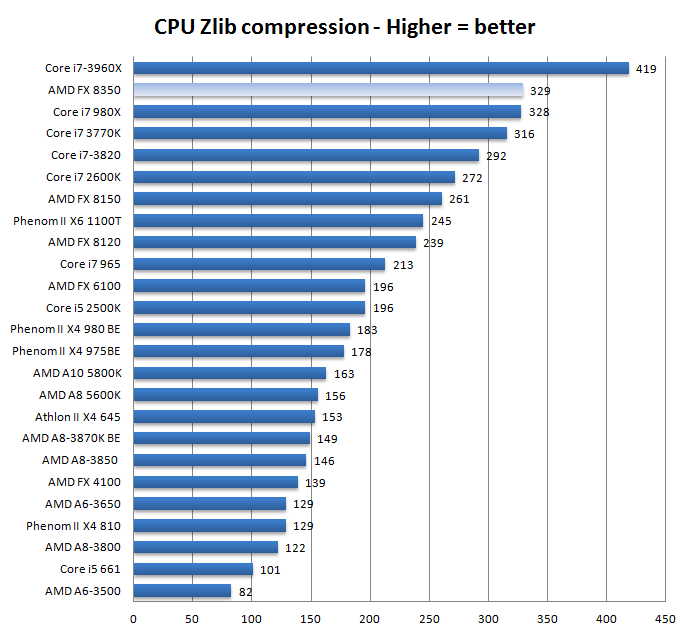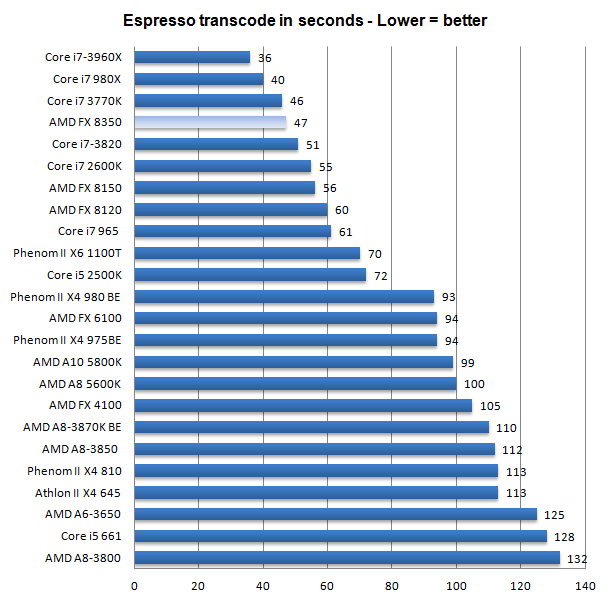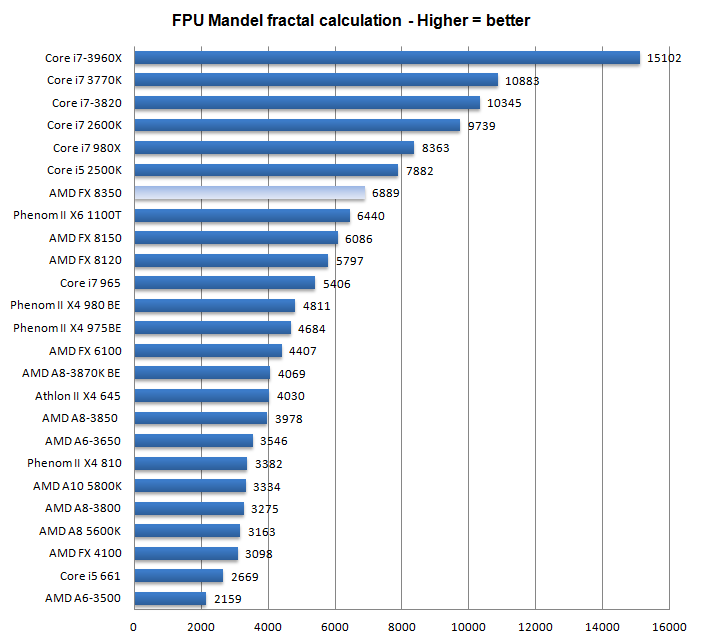That's not true AMD's implementation was (and still is) much poorer in regular usage such as lightly threaded scenarios because most the processor goes unused, whereas with Hyperthreading even if you only have 4 main threads you still have 90%+ of the processor providing the grunt to execute them.
AMD's cores (modules) weren't really worse than Intel's because if you compare an FX8350 and 2500K they perform about the same speed under ideal conditions when all of the processor is being utilised (eg. encoding), the problem is that AMD chose to split their cores straight down the middle leaving them short-handed in less than ideal conditions.
Its actually more a kin to a 3770K for Integer performance.
Its Floating Point performance where it falls down, although its not really THAT bad.
Each set of 2 Integer Units has either two 128Bit FP Units or combined as one 256Bit FP Unit.
Its an architecture that's very different to Intel's, both with and without Hyper Threading, most compliers are designed for Intel, there is nothing cynical about that, Intel have the largest market share and since its hard and expensive to code for two architectures at the same time; it just doesn't happen, so most application treat an AMD CPU like its an Intel.
The side effect of that is FPU thread allocation is very simple, it treats each Module as one core with one thread, so it pipes the work through one of its 128Bit FP Units causing a massive bottleneck.
I have said it before, but its worth saying again.
If AMD want to compete with Intel they have got to do it like Intel, it seems thats what they will now be doing.
They can't afford to be different.

Last edited:






